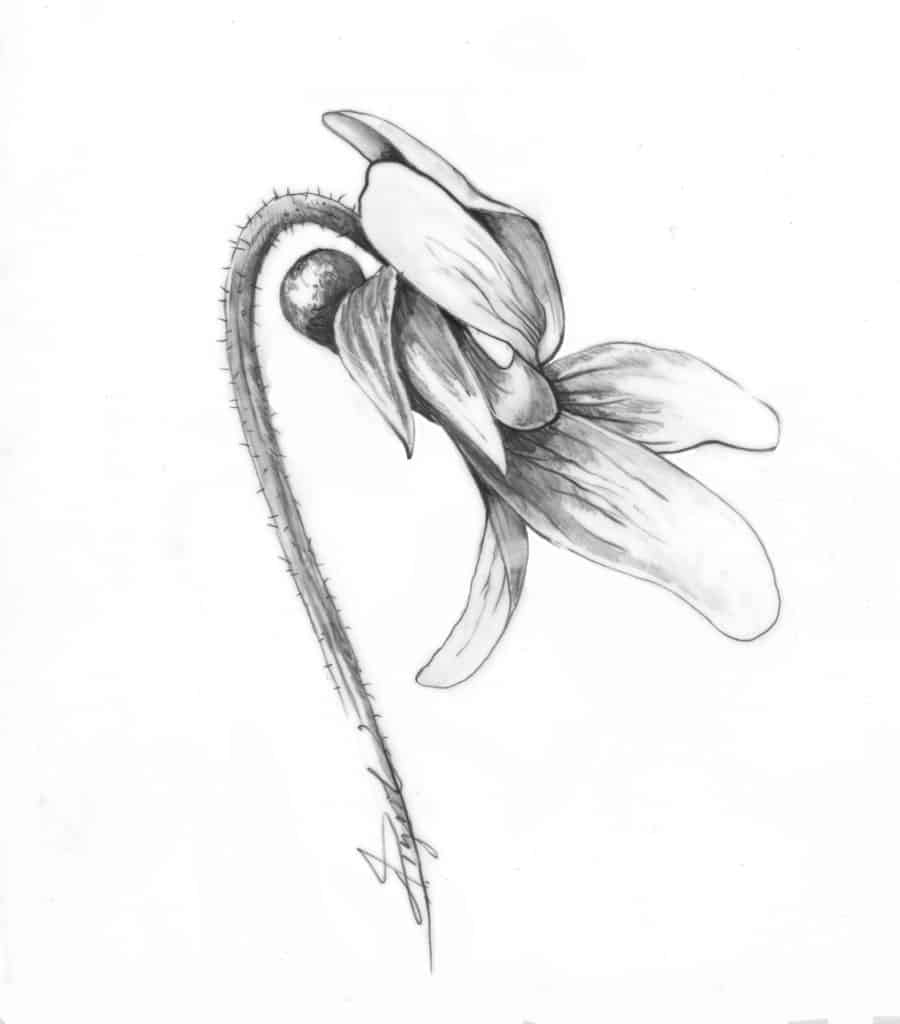
By Laurie D Morrisey
One of the first spring wildflowers you’ll see – perhaps even before the last shaded patches of snow disappear – is the violet. This common flower, which blooms from April through June, is widely known and easily identified.
There is more than one violet, however. The genus Viola contains some 500 species, including about 30 in the northeastern states and eastern Canada. It’s a large, varied, and fascinating group. Violets grow everywhere from sea level to the highest mountaintops, in meadows and marshes, along roadsides and riverbanks. They sprout in rocky hillsides, sandy fields, and moist woodlands. Their delicate flowers range in color from blue to yellow and white to varying shades of purple.
The first violet you’re likely to notice in the springtime in New England is Viola rotundifolia, or round-leaf yellow violet, which appears as an early splash of color poking up through dull leaf litter on the forest floor. If you’re walking through the woods, look for this violet near stones and tree trunks. A close inspection reveals purple veins on its lower petals.
The violet we are most familiar with, however, is Viola sororia, also called the common blue violet and a bundle of other names: purple violet, sister violet, common meadow violet, wood violet, confederate violet, woolly blue violet, and dooryard violet. This native wildflower grows abundantly in meadows and moist woods.
V. sororia reaches a height of 3-8 inches and has dark green, heart-shaped leaves growing directly out of the ground. It has two kinds of flowers; the first to bloom are the ones we are most likely to notice. These chasmogamous flowers, like those of all violets, are five-petaled, with two upper petals, two lateral petals, and a lower petal directed backward toward a nectar-laden spur. The center of the flower, raised on a slender, leafless stalk, is white, often with dark veining that serves as a pollinator guide. Tiny hairs on the two lateral petals keep water from getting inside the flower and diluting the nectar.
Ironically, despite this investment in attracting pollinators, these early-blooming flowers seldom produce seeds, since they open before many pollinators are flying about. The plants’ cleistogamous, or closed, flowers are more successful at producing seeds. These much-less-showy flowers grow close to, or even underneath, the ground and are sheltered by the violet’s leaves. They don’t open, but self-pollinate, and when the seeds are ready for distribution, the flowers split open to eject them.
In spite of the plants’ beauty, some homeowners violently dislike violets. These perennials also reproduce by underground rhizomes, making them tough to eradicate from lawns, especially the shady parts. Considering the violet’s tenacity, it’s hard to know where the expressions “shrinking violet” and “retiring violet” came from.
Other wild violet species in our region include the northern white (often growing in streambeds); sweet white (fragrant); birds-foot (deeply cut leaves); and arrowhead (pointy leaves). Categorizing different species within the Viola genus is challenging for botanists, because the plants hybridize so easily. Johnny-jump-ups and pansies, both favorites of potted porch displays, were hybridized from species of Viola.
The violet’s place in mythology, folklore, herbalism, and gastronomy could fill a volume. Its name is sometimes attributed to Greek mythology: Ione, or Io, was the name of Zeus’ lover. The god turned her into a heifer to protect her from his wife’s jealous wrath and gave her violets to graze on. In the language of flowers, violets symbolize humility and modesty. Each color has its credit: yellow symbolizes high worth, white is for innocence and purity, and blue is for faithfulness and devotion. Napoleon loved violets, earning him the nickname Corporal Violet.
Foragers, including Native Plant Trust’s senior research botanist Arthur Haines, use the leaves in salad. His favorite is the round-leaf yellow, which he gathers near his home in the western mountains of Maine. In a carotenoid contest, he points out, violet leaves beat spinach: they contain two and a half times as much. You might even find crystallized violet flowers on a cake – though in that case, forget about nutrition.
Laurie D. Morrissey is a writer who lives in Hopkinton, New Hampshire. The illustration for this column was drawn by Adelaide Tyrol. The Outside Story is assigned and edited by Northern Woodlands magazine and sponsored by the Wellborn Ecology Fund of New Hampshire Charitable Foundation: nhcf.org.




